National Police of Ukraine
| National Police of Ukraine Національна поліція України | |
|---|---|
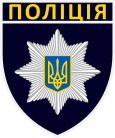 Patch of the National Police
| |
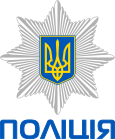 Emblem of the National Police
| |
 Badge of the National Police
| |
 Flag of the National Police
| |
| Common name | Police of Ukraine |
| Abbreviation | NPU |
| Motto | To serve and protect (Служити та захищати) |
| Agency overview | |
| Formed | July 3, 2015 |
| Preceding agency |
|
| Employees | 130,000
|
| Annual budget | ₴35.6 billion (2022) |
| Jurisdictional structure | |
| National agency | Ukraine |
| Operations jurisdiction | Ukraine |
| Size | 603,629 km² |
| Population | 44 million (approx.) |
| Governing body | Government of Ukraine |
| Constituting instrument |
|
| General nature | |
| Operational structure | |
| Overviewed by | Ministry of Internal Affairs |
| Headquarters | 10, Academician Bohomolets str., Kyiv, Ukraine |
| Agency executive |
|
| Facilities | |
| Patrol cars |
Toyota Prius Hyundai Sonata Renault Duster Mitsubishi Outlander Škoda Rapid ZAZ Vida Lada 110 VAZ 21099 UAZ Patriot Lada Niva VAZ 2107 ZAZ Forza VAZ 2113 Fiat Tipo VAZ 2114 VAZ 2115 |
| Notables | |
| Anniversary |
|
| Website | |
| Official website | |
The National Police of Ukraine (Ukrainian: Націона́льна полі́ція Украї́ни, romanized: Natsionálʹna polítsiya Ukrayíny, IPA: [nɐt͡s⁽ʲ⁾ioˈnɑlʲnɐ poˈl⁽ʲ⁾it͡s⁽ʲ⁾ijɐ ʊkrɐˈjinɪ]; abbr. НПУ, NPU), often simply referred to as the Politsiia (Поліція, 'Police'), is the national, and only, police service of Ukraine. It was formed on 3 July 2015, as part of the post-Euromaidan reforms launched by Ukrainian president Petro Poroshenko, to replace Ukraine's previous national police service, the Militsiya. On 7 November 2015, all the remaining militsiya were labelled "temporary acting" members of the National Police.
The agency is overseen by the Ministry of Internal Affairs.
History
Prior to 3 July 2015, law enforcement in Ukraine was carried out directly by the Ministry of Internal Affairs as the militsiya. Plans to reform the ministry, which was widely known to be corrupt, had been advocated by various governments and parties, but these plans were never realised.
In the aftermath of the 2013–2014 Euromaidan movement and subsequent revolution, the need for reform was acknowledged by all parties. Parliamentary elections were held in October 2014, after which all five of the parties that formed the governing coalition pledged to reform the ministry and create a new national police service.
As part of the reforms, the Minister of Internal Affairs, Arsen Avakov, presented plans to reduce the number of police officers in Ukraine to 160,000 by the end of 2015. The reform plans started with the combination of the ministry's current State Auto Inspection (DAI) and the patrol service in the country's capital Kyiv in summer 2015. This new police patrol received funding from various countries. 2,000 new policemen and women, picked from 33,000 applicants, were recruited to initiate the new service in Kyiv. Officers were trained in the North American style by police officers from the United States and Canada.

Upon the launch of Kyiv's new patrol police on 4 July 2015, the militsiya ceased all patrolling but continued working at precincts and administrative offices. After that the new police patrol was rolled out across Ukraine. The organisation was formally established as the National Police on 2 September 2015. By late September 2015, 2,000 new constables were on duty in Kyiv, 800 were on duty in Kharkiv and 1,700 were on duty in the cities of Odesa and Lviv. At this point, the militsiya was 152,000 officers strong, and continued to handle most policing across Ukraine. The basic salary of the new police force (almost $400 a month) is about three times as much the basic salary of the former militsiya; an attempt to decrease corruption.
The new National Police officially replaced the old militsiya on 7 November 2015. On that day, the remaining militsiya were labelled "temporarily acting" members of the National Police. The change allowed for them to become members of the National Police after "integrity checks", but they were only eligible if they met the age criteria and went through retraining. This transition period ended on 20 October 2016. In this transition period 26% of police commanders were dismissed and 4,400 policemen and policewomen demoted and the same number of people promoted.
The NPU was assisted by the EU Advisory Mission Ukraine between 2017 and 2022 through the PRAVO Police Programme, implemented by the United Nations Office for Project Services (UNOPS), in an effort to modernize Ukrainian law enforcement to European standards.

On 14 February 2022, the National Police was transferred to combat alert, as a response to the Russian military buildup and threat of the invasion. The National Police and its tactical unit Rapid Operational Response Unit directly participated in hostilities against the invading Russian Armed Forces at the Kyiv offensive. As the 2022 Russian invasion of Ukraine progressed, the National Police helped in the war effort by maintaining law and order in Ukrainian-controlled areas, escorting prisoners, operating checkpoints, capturing infiltrators and detaining prisoners of war. By 1 March, 17 policemen were killed, 50 injured and 2 missing in action.
In February 2023, the MIA ordered the raising of 8 new assault brigades to support the Ukrainian war effort, one of those new brigades, the Liut Brigade, is the only one so far made up of officers, NCOs and constables of the NPU's Special Police.
Terminology
According to Professor Oleksandr Ponomariv of the Kyiv University's Institute of Journalism, the correct Ukrainian language term for a police officer is 'politsiyant' (поліціянт). This is in contrast to the term 'politseysky' (поліцейський), a loan word from the Russian language, commonly used to refer to an officer of the National Police.

Ranks are rarely used by the public when addressing police officers in Ukraine; it is more common to hear the term Pan (Пан) (female - Pani (Пані) - Ukrainian for mister/miss - used to refer to police officers. Qualifying terms such as 'ofitser' (офіцер) or 'politseiskyi' (поліцейський) may also be used in conjunction with these forms of address.
Structure and branches
The National Police is divided into a number of different services. Each force has internal subdivisions. This leaves the police service with a large number of specialised branches which can more specifically target certain types of crime and apply more expert knowledge in the investigation of cases relating to their area of policing. In addition to these specific groups, all police forces retain a majority of officers for the purpose of patrol duty and general law enforcement.
The police contains the following subdivisions:
- Criminal Police (Кримінальна поліція) – investigation and prevention of serious and violent crime in Ukraine
- Department in the fight against drug-related crime
- Department of Cyber Police (Кіберполіція, Департамент кіберполіції) – fighting against cyber crimes
- Department of Economic Security
- Department of Patrol Police (Патрульна поліція) – general law enforcement operations, traffic policing and patrol duty (includes riot police divisions)
- number of municipal administrations
- Department of Police Security (Поліція охорони) – Successor to the State Security Service (nothing to do with the State Security Administration)
In addition, the following special units exist:
- Special Police (Спеціальна поліція) – Tasked with keeping order in areas with special status and/or affected by natural or ecological disaster.
- Rapid Operational Response Unit (KORD) (Корпус Оперативно-Раптової Дії) – Tactical response unit, tasked with resolution of stand-off situations involving hostages and/or heavily armed suspects. Also tasked with providing a tactical support function to other divisional officers.
- Pre-trial Investigative Services (Органи досудового розслідування) – Representatives of the National Investigative Bureau, Tax Authorities and Security Services, tasked with investigating crime.
Shoulder patches of the regional police subdivisions

| Territorial force | Date of formation | |
|---|---|---|
| Oblast / Municipality | Police force | |
 City of Kyiv City of Kyiv
|
 Kyiv Patrol Police Kyiv Patrol Police |
4 July 2015 |
 City of Lviv City of Lviv
|
 Lviv Patrol Police Lviv Patrol Police |
23 August 2015 |
 City of Odesa City of Odesa
|
 Odesa Patrol Police Odesa Patrol Police |
25 August 2015 |
 City of Kharkiv City of Kharkiv
|
 Kharkiv Patrol Police Kharkiv Patrol Police |
26 September 2015 |
 Kyiv Oblast Kyiv Oblast
|
 Kyiv Oblast Patrol Police Kyiv Oblast Patrol Police |
7 October 2015 |
 City of Uzhhorod City of Uzhhorod
|
 Uzhhorod Patrol Police Uzhhorod Patrol Police |
29 November 2015 |
 City of Mukacheve City of Mukacheve
|
 Mukacheve Patrol Police Mukacheve Patrol Police |
29 November 2015 |
 City of Mykolaiv City of Mykolaiv
|
 Mykolaiv Patrol Police Mykolaiv Patrol Police |
6 December 2015 |
 City of Lutsk City of Lutsk
|
 Lutsk Patrol Police Lutsk Patrol Police |
19 December 2015 |
 City of Khmelnytskyi City of Khmelnytskyi
|
 Khmelnytskyi Patrol Police Khmelnytskyi Patrol Police |
26 December 2015 |
 City of Dnipro City of Dnipro
|
 Dnipro Patrol Police Dnipro Patrol Police |
17 January 2016 |
 City of Ivano-Frankivsk City of Ivano-Frankivsk
|
 Ivano-Frankivsk Patrol Police Ivano-Frankivsk Patrol Police |
30 January 2016 |
 City of Kherson City of Kherson
|
 Kherson Patrol Police Kherson Patrol Police |
8 February 2016 |
 City of Chernihiv City of Chernihiv
|
 Chernihiv Patrol Police Chernihiv Patrol Police |
19 February 2016 |
 City of Vinnytsia City of Vinnytsia
|
 Vinnytsia Patrol Police Vinnytsia Patrol Police |
22 February 2016 |
 City of Kremenchuk City of Kremenchuk
|
 Kremenchuk Patrol Police Kremenchuk Patrol Police |
27 February 2016 |
 City of Cherkasy City of Cherkasy
|
 Cherkasy Patrol Police Cherkasy Patrol Police |
1 March 2016 |
 City of Poltava City of Poltava
|
 Poltava Patrol Police Poltava Patrol Police |
5 March 2016 |
 City of Ternopil City of Ternopil
|
 Ternopil Patrol Police Ternopil Patrol Police |
12 March 2016 |
 City of Zhytomyr City of Zhytomyr
|
 Zhytomyr Patrol Police Zhytomyr Patrol Police |
22 March 2016 |
 City of Boryspil City of Boryspil
|
 Boryspil Patrol Police Boryspil Patrol Police |
24 March 2016 |
 City of Chernivtsi City of Chernivtsi
|
 Chernivtsi Patrol Police Chernivtsi Patrol Police |
27 March 2016 |
 City of Zaporizhia City of Zaporizhia
|
 Zaporizhia Patrol Police Zaporizhia Patrol Police |
16 April 2016 |
 City of Rivne City of Rivne
|
 Rivne Patrol Police Rivne Patrol Police |
19 April 2016 |
 City of Kropyvnytskyi City of Kropyvnytskyi
|
 Kropyvnytskyi Patrol Police Kropyvnytskyi Patrol Police |
28 April 2016 |
 City of Sumy City of Sumy
|
 Sumy Patrol Police Sumy Patrol Police |
12 May 2016 |
 City of Kramatorsk City of Kramatorsk
|
 Kramatorsk Patrol Police Kramatorsk Patrol Police |
14 May 2016 |
 City of Sloviansk City of Sloviansk
|
 Sloviansk Patrol Police Sloviansk Patrol Police |
14 May 2016 |
 City of Kryvyi Rih City of Kryvyi Rih
|
 Kryvyi Rih Patrol Police Kryvyi Rih Patrol Police |
19 May 2016 |
 Sievierodonetsk Sievierodonetsk
|
 Sievierodonetsk Patrol Police Sievierodonetsk Patrol Police |
22 May 2016 |
 Lysychansk Lysychansk
|
 Lysychansk Patrol Police Lysychansk Patrol Police |
22 May 2016 |
 Rubizhne Rubizhne
|
 Rubizhne Patrol Police Rubizhne Patrol Police |
22 May 2016 |
 Mariupol Mariupol
|
 Mariupol Patrol Police Mariupol Patrol Police |
30 May 2016 |
Rank hierarchy
Officers
| Rank group | General / flag officers | Senior officers | Junior officers | Officer cadet | ||||||||||||||||||||||||||||||||
|---|---|---|---|---|---|---|---|---|---|---|---|---|---|---|---|---|---|---|---|---|---|---|---|---|---|---|---|---|---|---|---|---|---|---|---|---|
| Staff officers | Supervisory officers | Senior officers | ||||||||||||||||||||||||||||||||||
| Ukraine |
No equivalent |

|

|

|

|

|

|

|

|

|

|
|||||||||||||||||||||||||
| First division general Генерал поліції 1-го рангу |
Second division general Генерал поліції 2-го рангу |
Third division general Генерал поліції 3-го рангу |
Colonel Полковник поліції |
Lieutenant colonel Підполковник поліції |
Major Майор поліції |
Captain Капітан поліції |
Senior lieutenant Старший лейтенант поліції |
Lieutenant Лейтенант поліції |
Junior lieutenant Молодший лейтенант поліції |
|||||||||||||||||||||||||||
Junior officers
| Rank group | Senior NCOs | Junior NCOs | Enlisted | |||||||||||||||||||||||||||||||||
|---|---|---|---|---|---|---|---|---|---|---|---|---|---|---|---|---|---|---|---|---|---|---|---|---|---|---|---|---|---|---|---|---|---|---|---|---|
| Junior officers | ||||||||||||||||||||||||||||||||||||
| Ukraine |
No equivalent |

|

|

|
No equivalent |

|
||||||||||||||||||||||||||||||
|
Staff sergeant Старший сержант |
Sergeant Сержант |
Corporal junior sergeant Капрал |
Constable police officer Рядовий поліції |
|||||||||||||||||||||||||||||||||
Equipment
Officers wear a camera that is constantly monitoring their performances. The resulting videos are posted on social media and broadcast on a reality TV show.
Vehicles
| Picture | Make and model | Country of origin | Use | Quantity | Notes |
|---|---|---|---|---|---|

|
Fiat Tipo |
Italy |
Patrol Car | 20 | Bought for Kyiv security police |

|
Hyundai Sonata |
South Korea |
Patrol car | 110 | Highway patrol car. Former taxis operated under the SkyTaxi brand by Kyiv's Boryspil International Airport. Owned by the state and transferred to the police as surplus to SkyTaxi's requirements. |

|
Isuzu D-Max |
Japan |
Patrol car | 38 | Procured for the police in the Western Ukrainian region of Volyn. |

|
Lada Niva |
Russia |
Patrol car | 9 | Were bought by Poltava Police in 2016. |

|
Mitsubishi Outlander |
Japan |
Patrol car | 635 | Were bought by in 2017. |

|
Peugeot 301 |
France |
Patrol car | ||

|
Raketa-Futong FT 150 |
China Ukraine |
Police motorcycle | ||

|
Renault Dokker |
Morocco |
Police van | 192 | Badged as Renault and based on the Dacia Dokker. Assembled in Morocco. |

|
Renault Duster |
Romania |
Patrol car | 140+ | Badged as Renault and based on the Dacia Duster. Assembled in Romania. |
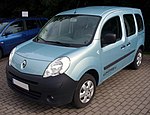
|
Renault Kangoo |
France |
Police van | ||
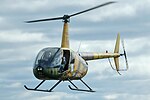
|
Robinson R44 |
United States |
Helicopter | 1 | Is used to maintain public order during mass events |

|
Škoda Rapid |
Czech Republic Ukraine |
Patrol car | 400 | First cars delivered in 2018. Assembled in Ukraine. |

|
Toyota Prius |
Japan |
Patrol car | 1,568 | General purpose patrol car. Supplied by Japan in return for Ukrainian emissions permits under the Kyoto Protocol. |

|
UAZ Patriot |
Russia |
Patrol car | >20 | Were bought before 2014 by former Ukrainian Militsya |

|
Volkswagen Crafter |
Germany |
Police van | ||

|
Volkswagen Jetta |
Germany |
Patrol car | bought in 2019 | |

|
ZAZ Forza |
China Ukraine |
Patrol car | ||
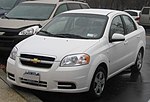
|
ZAZ Vida |
United States of America Ukraine |
Patrol car |
Police Day

National Police Day (День Націона́льної полі́ції, Denʹ Nacionálʹnoyi políciyi, Ukrainian pronunciation: [dɛnʲ nɐt͡s⁽ʲ⁾ioˈnɑlʲnoji poˈl⁽ʲ⁾it͡s⁽ʲ⁾iji]) on 4 July is the professional holiday of the Ukrainian Police. It commemorates the suspension of law enforcement duties by the Militsiya and the establishment of the National Police of Ukraine. It also coincides with the first oath of patrol policemen on Kyiv's Sofia Square. The holiday was introduced and first celebrated on 4 August 2015 and was celebrated on that day ever since until President Petro Poroshenko, by decree on 4 April 2018, declared that the holiday should be celebrated annually on 4 July and become a national holiday.
Controversies
Ukrayinska Pravda collected (from open sources) 64 crimes allegedly committed by Ukrainian police officers from 1 January 2020 until 30 May 2020. Cases ranged from extortion to rape to killings.